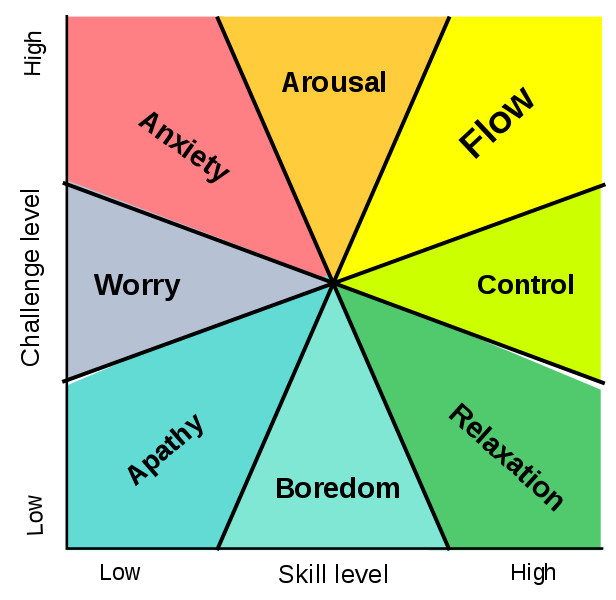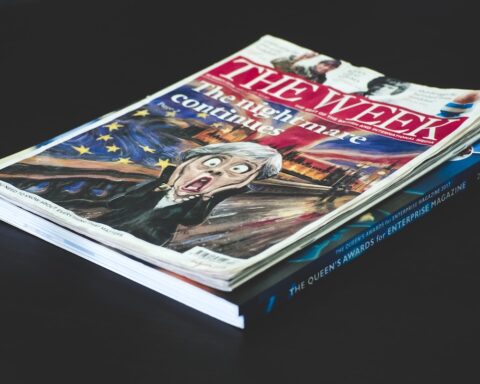“Flow is an optimal state of consciousness, a peak state where we both feel and perform our best. We become so involved in an activity that nothing else seems to matter. The ego falls away. Time flies. Every action, movement and thought follows inevitably from the previous one, like playing jazz. Your whole is being involved, and you’re using your skills to the upmost.”
As per the definition of the late Hungarian-American psychologist Mihaly Csikszentmihalyi, this is the state of flow, “the secret to happiness,” the place of peak performance. Also dubbed as the “Father of Flow,” the pioneering psychologist didn’t only leave behind a legacy but a whole new league of modern psychology from which we can all incorporate a piece in our own lives.
What is Flow?
The flow state is a theory brought about by the field of positive psychology. Have you ever experienced the feeling of “being in the zone”? The feeling of being so absorbed in your activity that your mind is laser-focused and nothing else seems to matter? This is exactly what it means to be in a state of flow.
Under the right conditions, one becomes fully immersed in what they are doing, losing track of time and space and becoming one with the task at hand. Hence, flow is the mental state a person experiences when he or she is working in a realm of energized concentration, complete immersion, and enjoyment in the process of said occupation.
A crucial element for the understanding of this state of mind is the distinction between pleasure and enjoyment that Csikszentmihalyi makes. Generally, we have the tendency to employ these concepts synonymously, although they are inherently different in their impact, effect and character.
Pleasure versus Enjoyment
The key difference that needs to be recognized when speaking about the two ideas of pleasure and enjoyment is found in the element of growth. While neither of the two necessarily inhibits growth, the one accelerates it and the other keeps us stagnant.
Pleasure:
According to Csikszentmihalyi, experiences that are pleasurable are homeostatic. Homeostasis, a term coined by the physician Walter Cannon in 1930, describes any process that living things use to actively maintain fairly stable conditions necessary for survival.
While homeostatic experiences keep us in a stable psychological condition, they do not facilitate our personal growth. When we encounter a pleasurable experience, our biological needs are fulfilled and sometimes exceeded, but we do not obtain anything more from them than short-term satisfaction and momentary fulfillment.
By no means does this suggest that we should completely eradicate such types of pleasures – because sometimes, sitting on the couch watching a trivial reality TV show and eating a big bowl of Mac and Cheese is just what we need to take the edge off the day.
While these small actions of “self-care” are an important aspect of an individual’s quality of life, pleasurable experiences are not a part of flow: Flow experiences are characterized as energetic and engaging while ones of a pleasurable nature are normally idle and temporary.
Enjoyment:
When we speak of enjoyment on the other hand, this is a fundamentally different concept. In his bestselling book “Flow: The Psychology of Optimal Experience”, Mihaly Csikszentmihalyi defines the term “enjoyment” as “forward movement: a sense of novelty, of accomplishment”.
Enjoyable experiences are created, when we push our limits and accomplish something greater than ever before, by clearing a mental block or winning against ourselves and the boundaries that had been in place up to that very moment of going beyond limits.
Despite the fundamental understanding that flow experiences are calm and peaceful, they more often than not involve elements of physical pain and unpleasant sensations.
Hence, athletes that push themselves just the extra mile in order to win a competition often report feeling this sensation of flow and alignment – leading them to forget about the pain felt in the moment but remembering the utterly satisfying, fulfilling moments that many title “the best moments of their lives”.
Ultimately, it is these moments that lead to long-term sustainable growth that may be nurtured and built upon.
Famed American psychologist Carol Tavris shares this opinion, pointing out that:
The way to happiness lies not in mindless hedonism, but in mindful challenge.
Long story short: While the limits of pleasure are stretched rather quickly, flow is a continuous motion that should gradually take the place of temporary satisfaction. In the process of learning to enter a state of flow, Martin Seligman, another positive psychologist, states that one should let flow take over pleasure as a way to obtain gratifications that are less volatile and longer-lasting than subjective feelings.
Invoking Flow
In a world ruled by uncertainty and subject to the ever-changing dynamic of events that are out of our control, it is easy to believe that these uncontrollable factors also dictate our own fate. However, the key to alleviating this anxiety lies within the realization that we are our own master, the ruler over our own destiny. And where better to begin this shift towards mastery than in one’s own mind?
In order to be able to enter this state of “being in the zone”, certain conditions are necessary. A flow state can be invoked while engaged in any type of action or activity, though its occurrence is more probable if the driving force of motivation is of intrinsic nature.
Conditions for Entering Flow
The five main conditions for bringing about this state are as follows:
- The balance between challenge and skills:
If the task at hand is too testing and the individual’s skill-set is too low, it is easy for negative emotions to occur, hence creating an aversion to this particular challenge.
This balance is visualized in Csikszentmihalyi’s flow model, where the challenge level and skill level move along the axes of the diagram. The desired state of flow is entered when challenge and skill level are both at their highest.

- Goals and Feedback
Setting clear goals increases the likelihood of accomplishing the desired outcome of the activity. By receiving feedback that is specific one can adjust his or her actions that either inhibit or assist in meeting the requirements necessary for the task.
- Absence of self-consciousness
When we are in a flow state, we are so absorbed in our activity that we merge with it and become one entity. Here, the ego, or lack thereof, comes into play, as we touch an intuitive level of being when we abolish egocentrism and the interferences that come with it.
- Loss of the sense of time
Have you ever been so in tune with a task that time seems to slip through your fingers, only to give you the exhilarating feeling of absolute timelessness? When time slows down, speeds up, or simply ceases to exist, we realize that we have entered a state of maximum concentration and bliss – this is what being in the moment really means!
- Autotelic involvement
As mentioned earlier, an autotelic experience is connected to feelings of emotional fulfillment, genuine human connection, and a sense of curiosity and desire to learn. Csikszentmihalyi characterizes this “dimension” as the final stage of being in a flow state:
Flow is neither good nor bad. It simply is. Flow can lead to experiencing life more fully and intensely. We can experience more meaning. It also can strengthen how we define who we are.
Finding your Flow
If we dare to dive even deeper into the realms of our consciousness, we will inevitably realize that the concept of flow is by no means a product brought about by the new age. Meditation and Yoga, both ancient spiritual practices, share undeniable similarities.
The goal of yoga is to achieve an inner balance, a state of harmony and control, with the ultimate objective being the attainment of ‘moksha’, a state of non-attachment, non-ego and ultimate bliss.
While the application of the flow model can aid us in understanding the nature and popularity of spiritual traditions such as yoga, Csikszentmihalyi strongly emphasizes that flow can be reached with any activity, be it rock climbing (Alex Honnold), skiing, painting, cooking or even engaging in an effortful philosophical discussion.
Essentially, we must come to the conclusion that our highest potential is to be found within ourselves. For most of us it is still lingering somewhere in the depths of our human consciousness,but it is our responsibility to find our flow.
I will now leave you with the famous words of the one and only Bruce Lee, one of the grand masters of flow: “Be like water”.
If you want to learn more about techniques that can help you with entering flow, check out this article on Headspace or look into Mihalyi Csikszentmihalyi’s inspiring 2004 TED Talk:
Reviewed by Sarah Guvi and proofread by Juxhina Malaj





